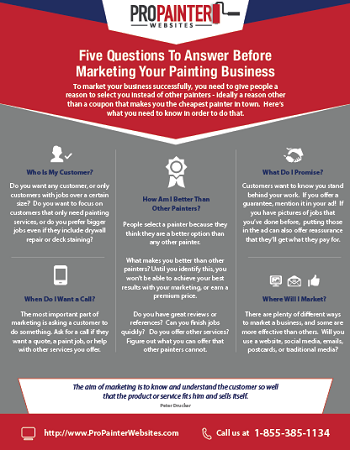Explore The Impact Of Seasonal Elements On The Efficiency Of Business Outside Painting And Recognize The Ideal Times To Achieve Enduring Results For Your Job
Explore The Impact Of Seasonal Elements On The Efficiency Of Business Outside Painting And Recognize The Ideal Times To Achieve Enduring Results For Your Job
Blog Article
Published By-Doherty Urquhart
When you're preparing an industrial exterior paint task, seasonal elements can make or break your results. You'll want to take into consideration exactly how temperature level and moisture impact paint application and drying out times. Selecting the best period can guarantee your paint sticks effectively and lasts longer. However which periods are absolutely the best for this sort of work? Let's discover the crucial elements that can affect your task's success.
The Effect of Temperature Level on Paint Application
When you're intending an industrial external painting task, the temperature level can dramatically influence how well the paint sticks and dries.
Preferably, you wish to repaint when temperature levels range between 50 ° F and 85 ° F. If it's too chilly, the paint may not heal properly, causing problems like peeling off or splitting.
On the other hand, if it's too hot, the paint can dry also quickly, protecting against correct bond and causing an uneven finish.
You ought to likewise think about the moment of day; early morning or late afternoon provides cooler temperatures, which can be much more favorable.
Constantly check the producer's referrals for the particular paint you're utilizing, as they often provide assistance on the excellent temperature level range for ideal outcomes.
Moisture and Its Effect on Drying Times
Temperature isn't the only ecological factor that affects your industrial external paint task; humidity plays a significant duty as well. High humidity degrees can reduce drying times drastically, influencing the general top quality of your paint task.
When the air is filled with wetness, the paint takes longer to cure, which can bring about issues like poor adhesion and a greater danger of mildew growth. If you're painting on an especially moist day, be gotten ready for prolonged wait times between layers.
It's important to keep track of neighborhood climate condition and strategy appropriately. Preferably, go for humidity degrees in between 40% and 70% for optimum drying.
Maintaining visit their website consider mind guarantees your job stays on track and supplies an enduring coating.
Best Seasons for Commercial Outside Painting Projects
What's the best time of year for your commercial outside painting projects?
Spring and early fall are generally your best options. Throughout these periods, temperature levels are mild, and moisture levels are often reduced, creating suitable problems for paint application and drying.
Avoid summer's intense heat, which can cause paint to completely dry as well quickly, causing bad attachment and coating. Likewise, winter's cold temperature levels can impede correct drying out and treating, taking the chance of the durability of your paint work.
https://www.bankrate.com/mortgages/ways-to-increase-your-homes-value/ for days with temperatures between 50 ° F and 85 ° F for ideal results. Bear in mind to inspect the local weather report for rain, as damp problems can wreck your task.
Preparation around these aspects guarantees your paint job runs smoothly and lasts much longer.
Conclusion
In conclusion, planning your business external painting tasks around seasonal factors to consider can make a significant difference in the end result. By organizing job throughout the optimal temperatures and moisture levels, you'll ensure much better attachment and drying times. Remember to watch on local weather prediction and pick the correct time of year-- springtime and early autumn are your best choices. Taking these steps will assist you achieve a sturdy and professional finish that lasts.
